Dr Martin Baruffol, from Royal Botanical Gardens Kew, reports on the vegetation surveys conducted by members of the PARAGUAS research team in the high-altitude páramos of Boyacá, Colombia. PARAGUAS is investigating how plants and people are influencing water storage in such areas, the source of water for many in Colombia.
Our project PARAGUAS is now in full swing and several field teams, each responsible for different field components of the project, have been heading up into the mountains, up above 3000 meters where the Paramo is, and revisiting the sites established during our first field visit in February 2019. Each of these teams are collecting data that eventually will inform the soil biochemical and hydrological models being developed by their PARAGUAS colleagues.
The vegetation surveys
Myself and Mauricio Diazgranados are responsible for the vegetation surveys. We led the establishment of 145 survey plots in six pairs of micro-cuencas (mini-catchments, with contrasting land use conditions) in February-March 2019. We recently were back in the field for our second field campaign, which should have lasted from February to end of April 2020. However on 17 March all field work was stopped until further notice due to the Covid-19 outbreak. For this second campaign we are working together with a group of six BSc and MSc students from Colombian Universities whose project’s fieldwork is funded by PARAGUAS. Our aim is to characterize the predominant Hydrological Response Units found in each of the catchment pairs, in terms of vegetation structure and composition, providing data on biomass, necromass, plant species diversity and functional diversity. These data will be used to inform the biochemical and hydrological models, which will help to compare the effects, if there are from a managed versus a conserved catchment.
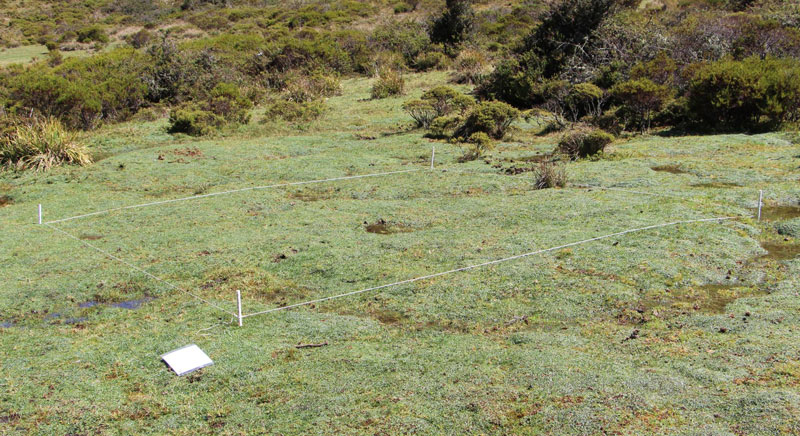
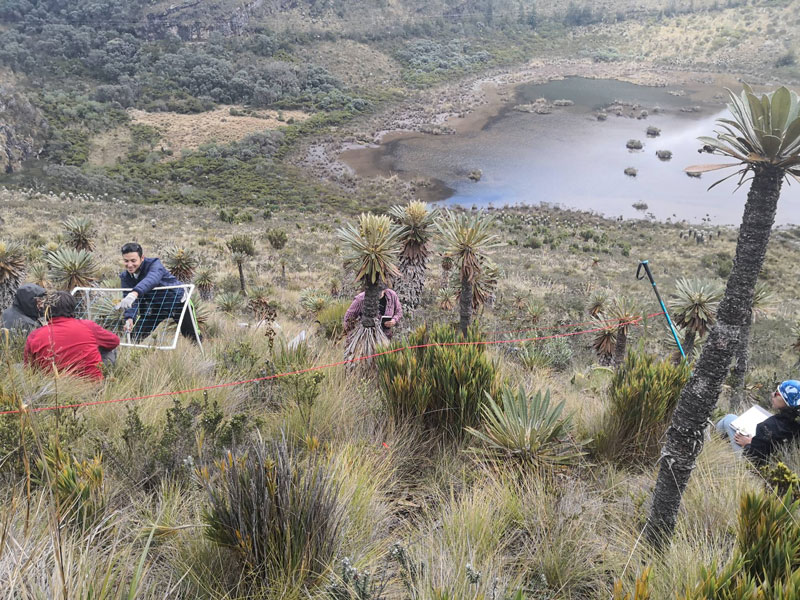
Colombian students
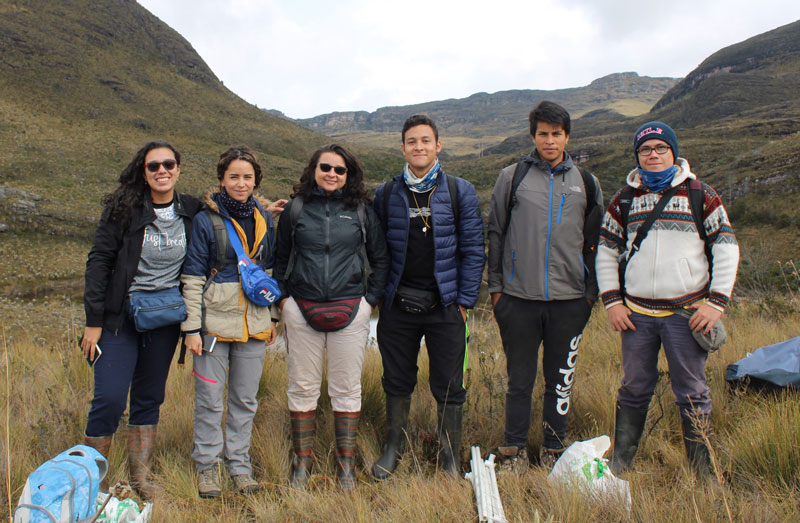
Jimmy Rodriguez is an MSc student of the Universidad Industrial de Santander. He aims to develop biomass allometric relations for two of the dominant growth forms in Páramos: Rosettes and shrubs. Ana Maria Castro, Anny Daniel Montoya and Daniel Martinez are BSc students of the Universidad de Los Llanos and are in charge of establishing, respectively, the plant composition, biomass and necromass of the shrub layer and herbaceous layer. Daniela Baquero, a BSc student of the Universidad Militar Nueva Granada, will be working on functional diversity and Juan Sebastian Montero, a Bsc student of th Pontificia Universidad Javeriana will be estimating the water release capacity of necromass. Finally, there is Jeffrey Prieto who is responsible for the local logistics of all the PARAGUAS field campaigns and is also providing field support where needed.
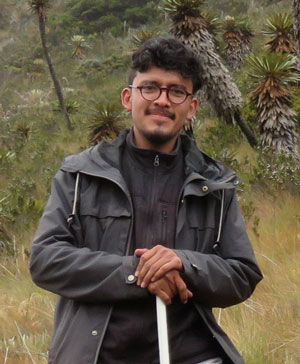
Working together
Although the 1st and 2nd field campaign teams are quite different, in each instance there was a similar atmosphere, a great camaraderie which ensued from sharing similar research interests, from working towards a common goal, but also probably from the joy of experiencing such amazingly beautiful and unique landscapes, in such a friendly environment.
I guess that is why everyone is so enthusiastic every single day and why, whether rain or shine, all are walking, carrying equipment up into the mountains and getting on with the task at hand, and why when back in the valley at the end of the day all continue after dinner until late at night, organizing and processing the different samples, and are ready the next day at 6 am to repeat the same routine all over again.
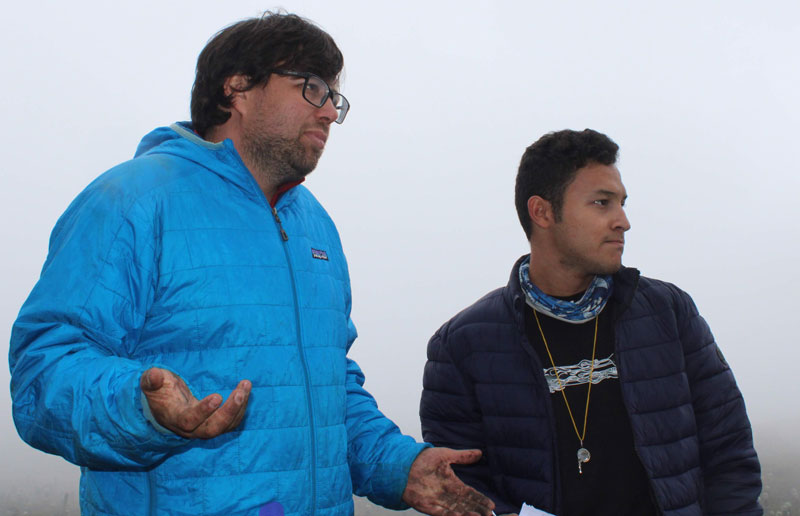
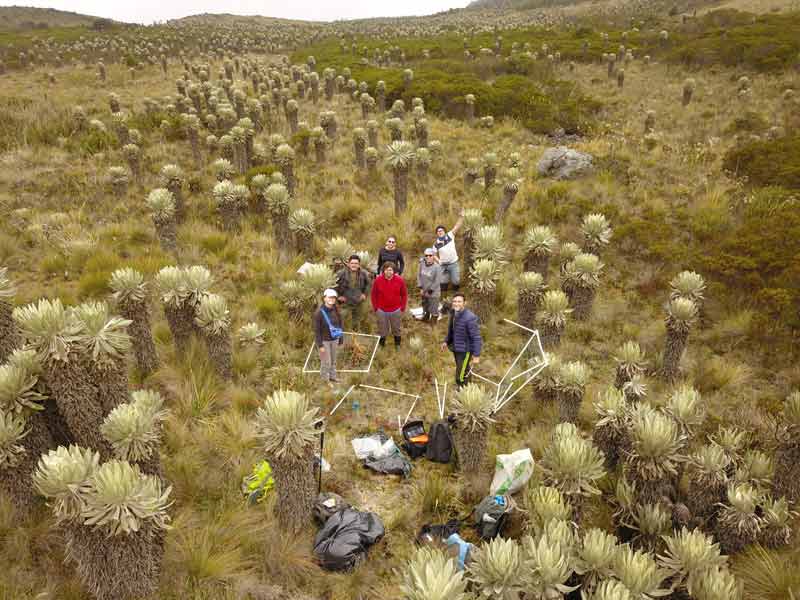
While in the field, members of the project, whether experienced scientists or students, have been keen to discuss their role in the project, how each other’s individual research goals fit within the overarching aim the project (to understand what controls and influences the Páramo’s water capture and storage capacity). When working interdisciplinary, it is important for us to understand the contributions of each discipline, including our own, towards this project. The dedication and engagement of my fellow scientists and students within this project never ceases to amaze me.
I have been impressed by people’s perseverance and collaborative spirit under what are often physically and mentally difficult fieldwork conditions, having in many cases left behind their daily lives back home to devote time and effort on their research goals. Observing the enthusiasm of each and everyone in this project, how each in their own capacity are ready to give, gives me faith that the PARAGUAS project will achieve its ambitious goals.
